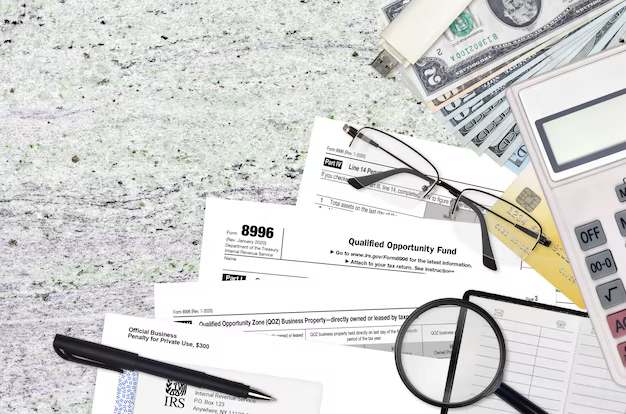Navigating the Maze of Mailing Your 1040 Tax Return: A Comprehensive Guide
When it comes to filing taxes, every detail counts, from the numbers on the form to the address on the envelope. Most taxpayers in the United States are familiar with the Form 1040, as it's one of the most common tax forms used. Yet, a significant number of people find themselves asking, "Where do I mail my 1040 tax return?" If you've ever wondered this yourself, you're in the right place. Let's unravel the mystery of where and how to send your Form 1040 to the IRS and explore some key considerations that ensure your return is submitted correctly and efficiently.
📌 Why Mailing Your 1040 Tax Return is Still Relevant
In an age dominated by digital transactions, you might wonder why anyone would still choose to mail their tax return. However, mailing tax returns is not a thing of the past; it's a vital option for several taxpayers due to a variety of reasons:
- 📄 Preference for Paper: Some individuals prefer handling physical documents and ensuring every piece of information is correct before submission.
- Privacy Concerns: While electronic filing is generally secure, some taxpayers feel more comfortable with traditional mailing methods.
- Complex Returns: Those with intricate financial situations or special forms might find the paper process easier to manage.
- Accessibility Issues: Not everyone has easy access to online filing resources.
📬 How to Determine the Correct Mailing Address
Determining where to mail your Form 1040 isn’t always straightforward. The address you use depends mainly on two factors: your state of residence and whether you are including a payment with your return.
Factors Influencing Your Mailing Address
- State of Residence: Each IRS processing center services specific states.
- Payment Status: If you owe taxes and are sending a check or money order with your return, the mailing address is different from the one you'd use if you're not sending a payment.
General Steps to Find the Right Address
Here's a simplified approach to determining where to deliver your 1040:
- Check IRS Instructions: Each year's Form 1040 instructions include a section called "Where to File" that provides the correct mailing addresses based on the criteria discussed.
- Identify Your Situation: Confirm whether you’re sending a payment with your return or not.
- Use State References: Look for your state and review the assigned IRS address.
Example Format for Mailing 1040s
The IRS uses specific format standards for mailing. Typically, you will:
- Use the latest IRS instructions for your tax year.
- Clearly label your envelope with your return address.
- Mark whether it includes a payment.
🔍 Special Situations: What Ifs and How Tos
Tax filing isn’t always clear-cut. Here are a few additional considerations that may affect where to mail your 1040:
If You’re Outside the U.S.
U.S. taxpayers living abroad need to file their taxes just like domestic residents. However, they should verify specific IRS mailing addresses designated for international filers.
If You Need an Extension
If you're unable to file your Form 1040 by the deadline, you must file for an extension. The extension form, however, should be mailed to a different address, as stipulated in its instructions.
Using Certified Mail or a Delivery Service
For added security and proof of delivery, taxpayers often opt for certified mail or private courier services. The IRS recognizes some delivery services as adequate for on-time filing. Be sure to ask for a receipt to serve as proof of mailing.
📏 Key Strategies for Avoiding Mail Issues
When it comes to mailing your tax return, ensuring accuracy and reliability streamlines the process and prevents unnecessary complications. Here’s how you can avoid common pitfalls:
- 📄 Double-Check Information: Before sealing the envelope, confirm all information is complete and correct.
- Use the Correct Postage: Ensure you have the appropriate postage depending on envelope size and weight.
- Provide a Return Receipt Address: Include a return receipt or self-addressed stamping to confirm receipt.
💡 Quick Reference Summary: Mailing Steps
To make things even easier, here is a quick glance at the steps to take when preparing to mail your 1040 tax return:
Steps for Mailing:
Prepare Your Documentation:
- Fill out Form 1040 accurately.
- Attach all necessary schedules and forms.
Choosing the Mailing Address:
- Verify based on your location and payment status.
Additional Preparations:
- Clearly mark your envelope, especially if it contains a payment.
- Include your return address.
Consider Delivery Methods:
- Use certified mail or delivery services for tracking and security.
Final Review:
- Double-check form completion and postage.
- Note mailing deadlines.
🔹 Remember: Always retain copies of your submitted forms and any correspondence with the IRS for your records.
The Bigger Picture: Why This Matters
Understanding where and how to mail your Form 1040 is part of a broader picture of tax preparedness and financial responsibility. Properly managing your tax submissions not only prevents potential delays or errors but also underpins a proactive approach to personal finance management.
Mailing a tax return might seem like a relic of the past in today's digital world, but it remains a crucial option for many. Choosing the right address and ensuring your forms are correctly submitted can remove a significant layer of stress from the tax-filing process. Whether by electronic or paper means, what matters most is that your tax return is accurate, timely, and submitted with a sense of confidence.
Equip yourself with the knowledge and tools needed to navigate tax season smoothly, and don’t hesitate to consult with tax professionals for personalized guidance tailored to your unique situation. Here's to trouble-free tax filing!
